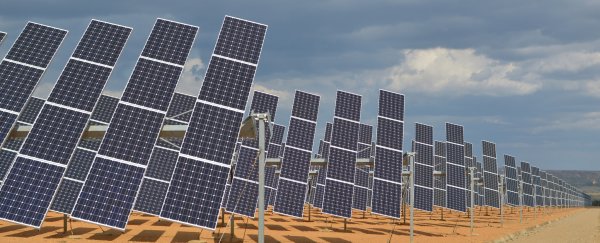If California covered its houses, buildings and urban spaces with small-scale solar installations, it would generate enough electricity to power the state three to five times over, exciting new research has revealed.
Currently one the main criticisms against solar power is that there isn't enough available space to build solar farms. But the new study, led by Rebecca R. Hernandez from the Carnegie Institution for Science in the US, has revealed that installing solar panels on California's rooftops and small concentration solar power plants in public parks would provide more than enough energy - without damaging any natural habitats.
"Integrating solar facilities into the urban and suburban environment causes the least amount of land-cover change and the lowest environmental impact," said Hernandez in a press release.
Her study looked at two types of solar technology - photovoltaic solar panels and concentrating solar power, which uses giant curved mirrors to focus the Sun's rays - and found that a mix of both would work the best, depending on what type of urban space you're working with.
For example, the research found that 6.7 million acres would be ideal for solar panel arrays to be installed, mostly on rooftops, while a further 1.6 million acres could be used to build concentrated solar power plants.
Without clearing any additional space, these small-scale installations could generation up to 21,000 terawatt-hours of energy per year - 15,000 terawatt-hours from photovoltaic panels, and 6,000 terawatt-hours from concentration solar power. That's up to five times the amount of energy that the entire state of California needs. The results have been published in Nature Climate Change.
On top of that, Hernandez found that there was plenty of other non-ecologically sensitive sites, such as degraded land or abandoned lots, that could be developed with minimal effort to provide even more space for solar installations.
"Because of the value of locating solar power-generating operations near roads and existing transmission lines, our tool identifies potentially compatible sites that are not remote, showing that installations do not necessarily have to be located in deserts," said Hernandez in the release.
Although this research was done specifically on California, which is one of the prime solar power spots in the US, the results apply to pretty much any sunny, urban location, and prove that we don't necessarily need to build huge solar farms out in the desert or on top of oceans in order to generate large amounts of sustainable power. The space we've already taken over will do just fine.
